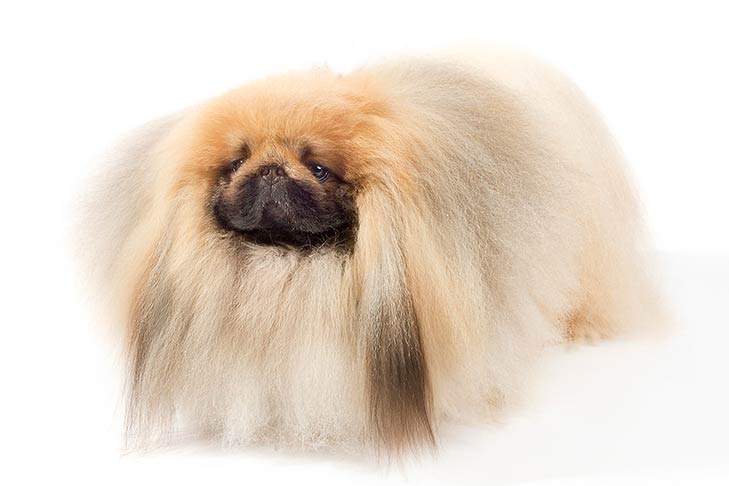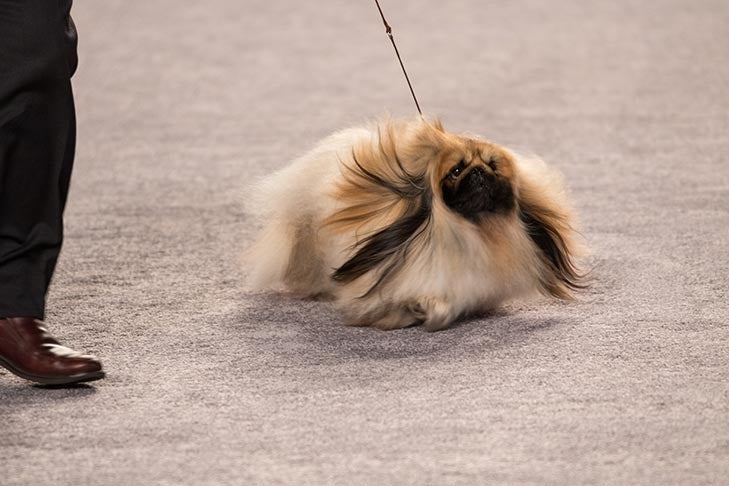CARING WITH FAMILY
|
| Evaluating a breed's propensity for affection towards family members and individuals they know well. Some breeds may exhibit a more reserved or aloof nature towards everyone except their owner, while others embrace a friendly and outgoing demeanor, treating everyone they know as their best friend. |
LOVE WITH CHILDREN
Unwise
Good With Children
|
| Considering a breed's level of tolerance and patience with children's behavior as well as their overall family-friendly nature. It's important to note that dogs should always be supervised when around young children or children of any age who have limited exposure to dogs. Some breeds are inherently more patient and tolerant with children making them excellent family companions, while others may require more careful supervision and training to ensure a harmonious interaction between dogs and children. |
BEHAVIOR WITH DOGS
Unwise
Good With Other Dogs
|
| Assessing a breed's general friendliness towards other dogs. While it is vital to supervise and manage interactions and introductions between dogs certain breeds may possess a more innate tendency to get along well with other dogs both in domestic settings and in public environments. |
SHEDDING LEVELS & MANAGEMENT
No Shedding
Hair Everywhere
|
| Assessing the amount of fur and hair a breed is likely to leave behind. Breeds that shed heavily will typically require more frequent brushing to manage loose hair. Furthermore, heavy shedders may trigger allergies in sensitive individuals and may necessitate more consistent cleaning, including vacuuming and lint-rolling to maintain a tidy environment. It's important to consider these factors before choosing a breed particularly if dealing with allergies or a preference for minimal cleaning. |
COAT GROOMING STANDARDS
|
| Considering the grooming requirements of a breed, including bathing, brushing, trimming and other coat maintenance tasks. The frequency of these activities can vary depending on the breed coat type and individual preferences. It's important to assess the time patience and budget you have available for grooming when considering a particular breed. Some breeds may require more frequent and elaborate grooming which can demand additional time effort and potentially higher grooming expenses. |
DROOLING INTENSITY
Less Likely to Drool
Always Have a Towel
|
| Considering a breed's tendency to drool. If you have a preference for cleanliness and are a neat freak it is important to take into account whether a breed is prone to excessive drooling. Some breeds naturally produce more saliva and may leave ropes of slobber on your arm or create big wet spots on your clothes. If this is a concern for you choosing a breed with a lower tendency to drool might be more suitable. |
COAT STYLES GUIDE |
| Double |
| COAT SPECTRUM |
| Long |
FRIENDLINESS
Reserved
Everyone Is My Best Friend
|
| Evaluating a breed's general attitude towards strangers. Some breeds tend to be reserved or cautious when encountering unfamiliar individuals regardless of the setting, while others exhibit a friendly and welcoming nature, readily engaging with new people whenever the opportunity arises. It's essential to consider the breed's disposition towards strangers when determining the level of social interaction and comfort they can offer. |
LIVELINESS
Only When You Want To Play
Non-Stop
|
| Considering a breed's enthusiasm for play even beyond puppyhood. Some breeds maintain a strong desire to engage in playful activities like tug-of-war or fetch well into adulthood while others tend to be more content with relaxed activities and spending quality time on the couch with their owners. It's important to understand a breed's typical level of playfulness when considering their compatibility with your own activity preferences and lifestyle. |
VIGILANCE INTENSITY
What's Mine Is Yours
Vigilant
|
| Taking into account a breed's inclination to alert their owners to the presence of strangers. Some breeds are more vigilant and responsive to potential threats, diligently notifying their owners of any perceived intrusion whether it's the mailman or a squirrel outside the window. However, it's important to recognize that although these breeds may initially be wary of strangers entering the house they can warm up and become accepting if they are welcomed by the family. |
ADAPTATION CAPACITY
Lives For Routine
Highly Adaptable
|
| Assessing a breed's adaptability to change. Some breeds are more naturally flexible and can handle various changes in living conditions, noise levels weather conditions daily schedules and other day-to-day variations with ease. These adaptable breeds are generally better equipped to handle adjustments without becoming overly stressed or anxious. On the other hand, certain breeds may be more sensitive to change and may require more time and support to adjust to new situations. Understanding a breed's adaptability can help ensure a smoother transition when introducing changes in their environment or routine. |
OBEDIENCE LEVEL
Self-Willed
Eager to Please
|
| Considering a breed's trainability and willingness to learn. Some breeds naturally exhibit a strong desire to please their owners and are highly trainable showing eagerness to learn new commands and behaviors. These breeds tend to be more responsive and motivated by praise and rewards. On the other hand, certain breeds may possess an independent streak and can be more resistant to training preferring to follow their own inclinations rather than conforming to commands or expectations. Understanding a breed's trainability can be helpful in determining the level of effort and consistency required for successful training. |
STAMINA LEVEL
|
| Considering the exercise and mental stimulation needs of a breed. High-energy breeds typically require ample physical activity to expend their energy, engaging in activities such as running, jumping and playing throughout the day. Meeting their exercise requirements is essential for their overall well-being and can help prevent behavioral issues that may arise from pent-up energy. On the other hand, low-energy breeds have less demanding exercise needs and are content with more relaxed activities. They may prefer lounging around and snoozing for much of their day. Understanding a breed's energy level and exercise requirements can help ensure that their needs are adequately met and that they lead a happy and balanced lifestyle. |
VOCALIZATION
|
| Infrequent |
LEARNING CURIOSITY LEVEL
Happy to Lounge
Needs a Job or Activity
|
| Considering the mental stimulation needs of a breed to maintain their happiness and overall well-being. Certain purpose-bred dog breeds are specifically designed for jobs that demand decision-making, problem-solving, concentration and other mental qualities. These breeds require adequate mental exercise to keep their minds engaged and prevent boredom. Without proper mental stimulation, they may find their own outlets for mental activity which may not necessarily align with the owner's preferences or be desirable behaviors. Providing appropriate mental stimulation such as puzzle toys, training sessions, interactive games, and engaging activities is crucial to ensure the breed remains mentally fulfilled and content. |
| COLORS |
|
Description
|
Registration Code
|
|
Biscuit
|
006
|
|
Black
|
007
|
|
Black & Tan
|
018
|
|
Cream
|
076
|
|
Fawn
|
082
|
|
Fawn Sable
|
338
|
|
Gray
|
100
|
|
Gray Sable
|
339
|
|
Red
|
140
|
|
Red Sable
|
155
|
|
White
|
199
|
|
Red Brindle
|
148
|
|
Fawn Brindle
|
088
|
|
Light Red
|
340
|
|
| PATTERNS |
|
Description
|
Registration Code
|
|
Black Mask
|
004
|
|
Parti-Color
|
038
|
|
White Markings
|
014
|
|
Black Face
|
058
|
|
Black Face, White Markings
|
059
|
|
Black Mask, White Markings
|
005
|
|
Black Muzzle
|
056
|
|
Black Muzzle, White Markngs
|
057
|
|






























FRIENDLINESS
LIVELINESS
VIGILANCE INTENSITY
ADAPTATION CAPACITY